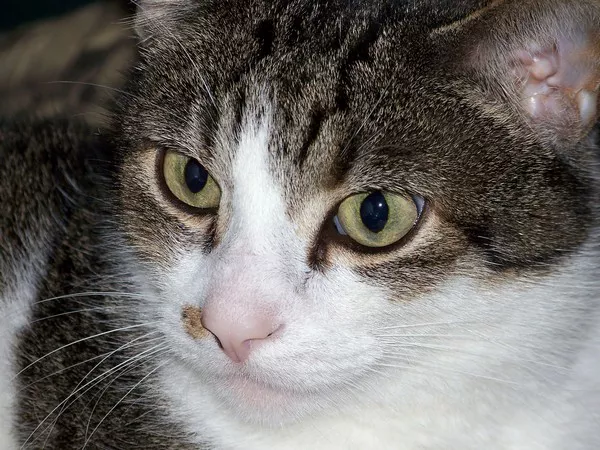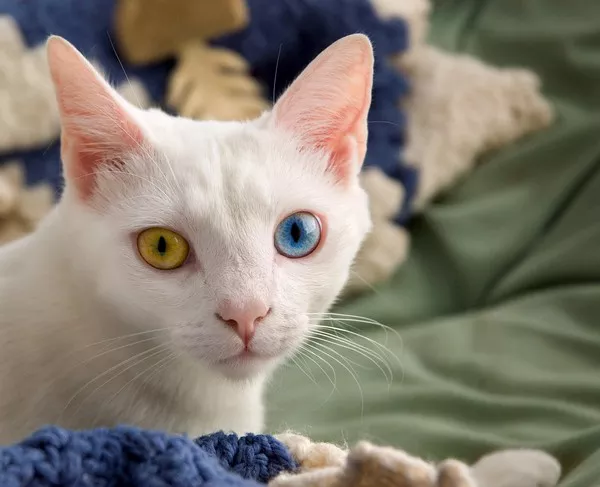Feeding raw meat to cats has become an increasingly popular trend among pet owners who want to provide a more natural, biologically appropriate diet for their feline companions. Cats are obligate carnivores, which means they rely heavily on animal-based protein to meet their nutritional needs. A raw meat diet, often referred to as a “raw food diet” or “BARF” (biologically appropriate raw food), aligns with their natural eating habits in the wild.
While the idea of feeding raw meat might seem daunting to some, many pet owners are finding that the benefits of a raw meat diet can outweigh the risks when approached with careful preparation and an understanding of feline nutritional needs. Raw meat offers various health benefits, from improved digestion to a healthier coat and better weight management.
In this article, we will explore the benefits of feeding raw meat to cats, what makes a raw meat diet suitable for felines, the best types of raw meat to include, and how to balance the diet with the right supplements and nutrients. We will also cover important tips for safely preparing and storing raw meat for cats and the significance of consulting a veterinarian before transitioning your cat to a raw food diet.
Benefits of Feeding Raw Meat to Cats
Feeding raw meat to cats can provide numerous benefits that contribute to their overall health and well-being. Here are some of the main advantages of a raw meat diet:
1. Improved Digestion
Raw meat is often easier for cats to digest compared to processed food, which may contain artificial additives, preservatives, and fillers. The natural enzymes found in raw meat aid in breaking down proteins and fats, promoting healthier digestion. A raw food diet can help reduce digestive issues, such as constipation, bloating, or vomiting, that are sometimes seen with commercial cat food.
2. Healthier Coat and Skin
The high protein and fat content in raw meat is beneficial for the skin and coat of cats. Cats that consume a raw meat diet often have shinier, smoother coats with less shedding. The inclusion of essential fatty acids found in raw meat, such as omega-3 and omega-6, helps to support skin health, reduce dryness, and improve the appearance of the fur. This is especially helpful for cats with sensitive skin or allergies.
3. Better Weight Management
Feeding raw meat can help cats maintain a healthy weight, as it is more nutritionally dense and less calorie-laden than many commercial processed foods. Raw food diets often have higher protein and fat ratios, which help to keep cats feeling fuller for longer, reducing the tendency for overeating. Additionally, cats on raw food diets tend to have better muscle tone and body composition.
4. Enhanced Dental Health
Chewing raw meat and bones can help maintain good oral hygiene in cats. The act of chewing helps to scrape away plaque and tartar, reducing the risk of dental diseases. This natural form of teeth cleaning is one of the significant benefits of feeding raw meat, as it can help prevent gum disease and tooth loss.
5. Increased Energy and Vitality
Many pet owners report that cats on raw meat diets tend to be more energetic, active, and alert. The high-quality, nutrient-dense food provides the vitamins, minerals, and amino acids necessary for optimal organ function, immune health, and overall vitality. Cats may experience an increase in energy levels, which can result in more playful and active behavior.
What Makes a Raw Meat Diet Suitable for Cats?
A raw meat diet for cats needs to meet their specific nutritional requirements. As obligate carnivores, cats rely on animal-based proteins and fats to meet their energy and amino acid needs. In contrast, plants and carbohydrates offer little to no nutritional value to cats. Therefore, a raw diet should consist mainly of high-quality animal-based proteins, fats, and essential nutrients.
High-Quality Animal-Based Proteins
The foundation of any raw meat diet for cats is high-quality animal-based proteins, as cats require these to thrive. Animal proteins are complete proteins, meaning they contain all the essential amino acids that cats need for healthy muscle growth, organ function, and overall vitality. Common animal-based proteins include chicken, turkey, beef, fish, and rabbit.
Cats also require certain nutrients, such as taurine, which is found naturally in meat. Taurine is essential for heart health, vision, and overall metabolism. Unlike dogs and humans, cats cannot produce sufficient taurine on their own, so it must be obtained through their diet.
Appropriate Fat Content
Fat is another essential component of a raw meat diet for cats. Cats need healthy fats to support energy production, maintain their coat, and absorb fat-soluble vitamins like A, D, E, and K. Animal fats are the best source of these nutrients for cats. The right balance of fat ensures that your cat’s energy needs are met and that they remain lean and healthy.
Balanced Nutrients
In addition to protein and fat, a raw diet must include essential vitamins and minerals. Cats require vitamins like B vitamins, vitamin A, and vitamin D to maintain metabolic functions. Minerals such as calcium and phosphorus are crucial for bone health. Organ meats are rich in these nutrients and can be included to provide a more complete diet for your cat.
Best Types of Raw Meat for Cats
There are several types of raw meat that are suitable for feeding cats. The best options provide a variety of nutrients that cats need to stay healthy. Here are some of the top choices:
1. Chicken
Chicken is one of the most popular choices for feeding raw meat to cats. It is widely available, affordable, and an excellent source of protein. Chicken provides essential amino acids, such as taurine, and is relatively easy to digest. Thigh meat is often preferred for its chewier texture, which can help clean your cat’s teeth as they eat.
While chicken breast is a lean option, chicken thighs provide a bit more fat, which is beneficial for energy and coat health. It’s important to avoid feeding cats cooked chicken bones, as they can splinter and cause injury. Raw bones, however, are safe and provide valuable minerals.
2. Turkey
Turkey is another excellent source of protein for cats and is often used as an alternative to chicken. Turkey meat is lean and provides a similar nutritional profile to chicken. It’s a good option for cats with food sensitivities or allergies to chicken. Turkey is rich in vitamins and minerals like B-vitamins, niacin, and selenium, which support the immune system and overall health.
Turkey necks and thighs can be especially beneficial for cats as they provide meat, bones, and cartilage that contribute to a balanced raw diet.
3. Fish
Fish, particularly oily fish like sardines, mackerel, and pilchards, is a great addition to a raw meat diet. Fish is rich in omega-3 fatty acids, which help to reduce inflammation and support skin and coat health. Additionally, fish provides essential vitamins, such as vitamin D, and minerals like iodine.
When feeding fish, it’s important to use small whole fish, as they provide more balanced nutrition, including bones that are safe for cats to consume. Larger fish like tuna should be avoided in excess due to mercury contamination.
4. Beef
Beef is a good source of lean protein and provides a variety of nutrients, including iron, zinc, and B-vitamins. Lean ground beef can be a good option for cats who need more protein in their diet. Beef liver, in particular, is nutrient-dense and provides essential vitamins such as vitamin A and vitamin B12.
Beef is a versatile meat that can be rotated with other types of raw meat to add variety to your cat’s diet.
5. Rabbit
Rabbit is a less common but highly nutritious option that many cats enjoy. It is an excellent source of lean protein and provides essential nutrients like iron, phosphorus, and B-vitamins. Rabbit is also lower in fat than other meats like chicken and beef, making it a good choice for cats that need to lose weight or are prone to obesity.
Rabbit meat, including bones, is a great addition to a raw meat diet as it closely resembles what wild cats would eat in the wild. However, it can be harder to find and more expensive than other types of meat.
Inclusion of Bones and Organ Meats
Bones
Bones are an essential part of a raw meat diet for cats, as they provide important minerals such as calcium and phosphorus. These minerals are necessary for strong bones and teeth. Cats need to chew bones to keep their teeth clean and to help with digestion.
However, not all bones are suitable for cats. Always ensure the bones are raw and are the right size for your cat. Never feed cooked bones, as they can splinter and cause choking or internal injuries.
Organ Meats
Organ meats like liver, heart, and kidney are rich in vitamins and minerals, making them a crucial part of a raw diet. Liver is particularly nutrient-dense, providing high levels of vitamin A, iron, and B-vitamins. Heart and kidney meats are excellent sources of taurine, which is essential for heart health.
Including a variety of organ meats in your cat’s diet ensures they receive a well-rounded mix of nutrients, which can help prevent deficiencies.
Balancing the Diet
Supplements
While raw meat diets can be nutritionally complete, it’s important to include the right supplements to ensure your cat gets all the necessary nutrients. Cats require taurine, an essential amino acid that is found in animal tissues. Taurine supports heart health, vision, and metabolism. If your cat’s diet is lacking in taurine, supplements should be considered.
Other essential supplements include omega-3 fatty acids for skin and coat health, as well as calcium and phosphorus for bone strength. Consult with your veterinarian to determine whether your cat needs additional supplementation.
Variety
A variety of meats ensures that your cat receives a range of nutrients and prevents nutritional deficiencies. By rotating different types of raw meat (chicken, beef, turkey, rabbit, etc.) and including organ meats and bones, you can provide a well-rounded and balanced diet for your cat.
Preparation and Storage Tips
Preparation
When preparing raw meat for your cat, always practice safe handling. Wash your hands and sanitize all surfaces and utensils that come into contact with raw meat. It’s also essential to ensure the meat is fresh and sourced from reputable suppliers to reduce the risk of contamination.
Cut meat into appropriate portion sizes for your cat, and make sure bones are cut into manageable pieces. If you’re feeding organs, ensure they are cleaned thoroughly and cut into appropriate portions.
Storage
Raw meat should be stored in a freezer until ready to use. It’s important to only thaw the amount of meat you plan to use at once, as refreezing raw meat can lead to bacterial growth. Always keep raw meat in an airtight container to prevent cross-contamination with other foods.
Consulting a Veterinarian
Before making any significant changes to your cat’s diet, it is crucial to consult a veterinarian. A veterinarian can help you design a balanced raw meat diet that meets your cat’s specific nutritional needs and recommend appropriate supplements. They can also help you monitor your cat’s health as they transition to a raw food diet.
Conclusion
Feeding raw meat to cats can offer numerous health benefits, from improved digestion and healthier coats to better weight management and dental health. The key to a successful raw meat diet is ensuring a variety of high-quality animal-based proteins, including chicken, turkey, fish, beef, and rabbit, as well as essential nutrients from bones and organ meats. By preparing the diet safely, balancing it with supplements, and consulting a veterinarian, you can help your cat thrive on a raw food diet. Always remember that transitioning your cat to a new diet should be done gradually and carefully to avoid any digestive upset or nutritional imbalances.
Related Topics



























